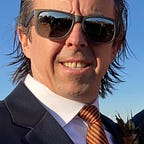Hard and Soft
polarity as a tactical principle in self-development
All of us are on some type of spectrum: fluctuations in mood and alertness, biorhythms and endurance, cycles of productivity and dietary cravings — all affect all, all affect us. We are not robots. We are complex. We are very busy just being ourselves. Being alive is a … lifetime occupation.
One may have an interesting and entertaining time here and now just by allowing oneself play a role of an object of thoughts, passions, likes and dislikes. Simple observation — in a form of a casual and primitive meditation — of just one’s thoughts can make for a deeply insightful and educational afternoon.
Although, if one were to build, create, manage something concrete in his or her life — one’s agency would have to develop in order to navigate through nevereverending dance of impressions, dreams, promises, hopes and plans. One will have to develop discipline. One would need to learn when to be hard and unyielding and when to be receptive and responsive.
In Samurai culture it was a custom for knight to explore arts of opposing polarity: some ‘hard’ and some ‘soft’. A nobleman were not only to become a master swordsman but also a calligrapher, for example. There is a deep wisdom here, I believe: by forcing one’s body and spirit be regularly exposed to conflicting polarities — brutal, exhausting and dangerous Kendo — on one hand, and elegant, gentle, breath-like sensitive Shodo application, on the other.
It seems to me that in order to survive and grow in our metaindustrial world it is vitally relevant to remain within self-creation and re-creation, and recreation through hobbies, arts and forms meditation. To manage ourselves in this amazingly volatile and unpredictably entertaining universe, we might want to take a lesson from Samurai culture and having consciously locked ourselves between Hard and Soft — release ourselves into and through the practice of art called Life.
